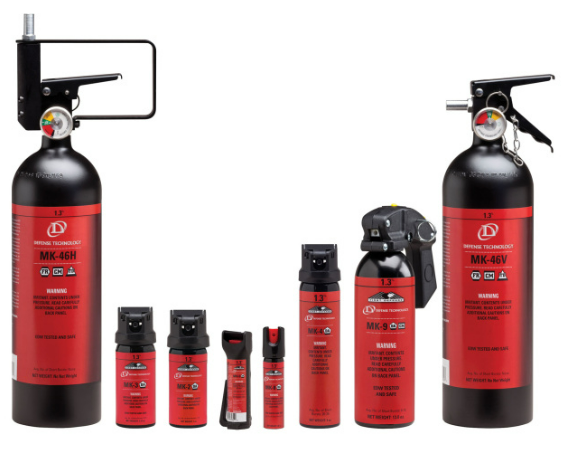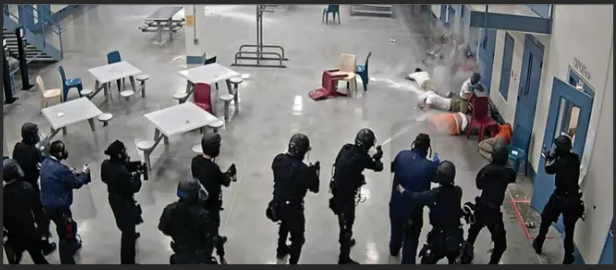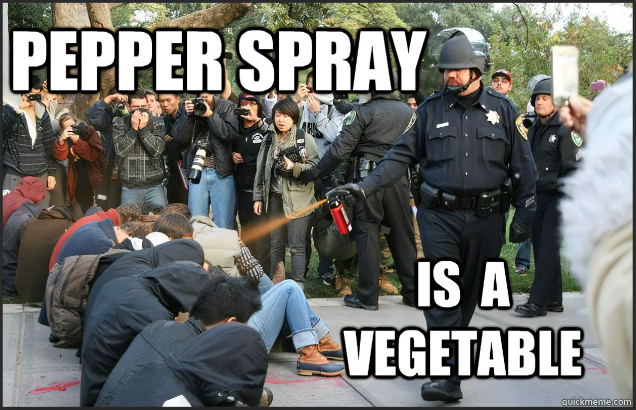This is part of a series exploring gear commonly used in the corrections profession. This article will discuss pepper spray.
What is it:
Originally engineered in the 1960s to defend against animals, pepper spray is a chemical irritant containing the compound capsaicin as the active ingredient. Also known as oleoresin capsicum spray, OC spray, and sometimes tear gas. Law enforcement began to use pepper spray in the 1980s and now this tool is often carried by correctional officers. Pepper spray is a use of force option which allows for some distance between the offender and officer. Unlike impact tools, pepper spray generally does not cause injury and is safe for most applications.
Though commonly referred to as “tear gas,” the active compounds of pepper spray are not actually gases but solids. The main ingredient, capsaicin, is derived from the fruit of plants in the genus Capsicum, including chilis. Ingredients taken from the chilis is in the form of oleoresin capsicum (OC). An emulsifier such as propylene glycol is used to suspend OC in water, and the suspension is then pressurized to make an aerosol pepper spray. Alcohols used to be used instead of water, but with the popularity of Tasers, the risk of fire has all but eliminated the use of alcohol.

There is a lot of confusion determining the strength of different pepper sprays. Different manufacturers use different measures when describing strength. Using the amount of capsaicin as a measure, civilian pepper sprays can range from a low of 0.18% to a high of 3%. Most law enforcement pepper sprays use between 1.3% and 2%. This measurement is unreliable because the concentration of CRC (and potency of these compounds) can vary. Scoville heat units (SHU) is a common indication of pepper spiciness. It does consider the different potency of OC compounds, but it cannot be reliably used in pepper spray because it measures the strength of the dry product, i.e. the OC resin and not what comes mixed in the spray. As the resin is always diluted to make it spray-able, the SHU rating is not a useful measure of strength.
Oleoresin capsicum is defined by its name, Oleo means “Oil” and oleoresin means “oil with resins” whereas capsicum is an ingredient in peppers.
Types of Pepper Sprays:
Pepper spray is typically dispersed from a handheld canister. However, it is also available in several different types of grenades and projectiles. Sprays not only come in different strengths, the size, distance, and shape of spray also differs. The size of pepper spray devices is limited only to the manufacturer’s imagination. Correctional agencies have adopted some standard sizes of pepper spray devices varying from 1.5 oz cans to large fire-extinguisher size bottles.

Generally, the larger of device, the farther the pepper spray can be effectively used. For example, a 3 oz can (MK-4 from Defense Technologies) is effective from 10-12 feet. A larger 13 oz can (MK-9 from Defense Technologies) is effective from 18-20 feet.
Another difference in pepper spray types is how the spay is delivered. Stream pattern sprays are arguably the most common. Cone pattern sprays deliver to a wider area which decreases the need to aim. Fog patterns limit range but can fill a small area quickly with spray. Gel compounds can be used which allow for greater accuracy and less risk of cross-contamination. Foam sprays also benefit from loss cross-contamination.
How Pepper Spray Works:
Pepper spray is an inflammatory agent. Exposure causes pain and tingling in the respiratory tract, accompanied by coughing. Signs and symptoms of pepper spray contact with eyes include lacrimation, inflammation of the conjunctiva, blepharospasm, redness, pain, and burning. Generally direct exposure to the mucus membranes (eyes, mouth, nose) is needed for proper effect although contact with skin can cause some itching or burning.
Most effects of pepper spray subside within an hour and does not leave lasing effects. There is some risk of eye trauma if sprayed too closely. Called the “hydraulic needle effect” the force of the spray leaving the device requires some stand-off distance to be safe. High concentrations of pepper spray can cause severe respiratory symptoms, such as reactive airways dysfunction syndrome. Surveys performed after massive‐scale tear gas deployments in Turkey reported persistent cough, chest pain, sputum production, hemoptysis, breathing difficulties, and nasal discharge, sometimes lasting for weeks after exposure. Another Turkish study with 93 males frequently exposed to tear gas and 55 unexposed subjects found that tear gas–exposed subjects were at greater risk for chronic bronchitis.
Decontamination:
Capsaicin is not soluble in water, and even large volumes of water will not wash it off, only dilute it. The irritant needs to be removed from the body. Water and moving air and time help in the decontamination process. Although there are many recommended treatments (milk, baby shampoo, lidocaine, ect.) studies have shown all of these treatments to be less effective than time.
Legality of Pepper Spray:
Pepper spray is considered less lethal, and many experts report it to be one of the most effective and safe force options against inmates which has no lasting effects. For departments who train a use of force continuum, pepper spray is usually lower on the use of force scale. Law enforcement use is widely accepted.
Civilian ownership of pepper spray legal in all 50 States, some areas have specific regulations pertaining to the purchase, possession and use of pepper sprays. Many states, including the following, have more strict restrictions: CA, FL, HI, MA, MI, NJ, NY, and WI.
Tactical Considerations:
Pepper spray can be highly effective, but there is some percentage of people it will not be as effective. Officers should be prepared to switch to another force option. Additionally pepper spray cannisters can expire or have a leak causing the device to not work. This author has found many sprays slowly leak over time after the spray is initially used the first time.
Minimum safe distances and maximum effective distances should be known to the user prior to carrying pepper spray. Effective distance can be highly impacted by weather conditions including wind and rain. Officers should also be aware of cross contamination issues especially when using pepper spray in public. When providing hospital coverage, foam or gel cannisters should only be used.
Because pepper sprays have an effect on respiratory tract, officers should consider medical needs of inmates after use. When safe to do so, restrained inmates should be positioned to reduce the chance of positional asphyxiation. Sitting up effected inmates, after the scene is safe, it a good practice as it limits the possibility of asphyxiation and helps to start the decontamination process.

Conclusion:
Pepper spray has been widely adopted for law enforcement use. Most departments and the public consider it a normal less lethal option to gain compliance and stop threats. Many correctional agencies equip every officer with pepper spray as a use of force option. The effects and limitations of pepper spray should be known to any officer issued the tool. Due to some risk after use, the requirements after deployment should be trained and followed.
